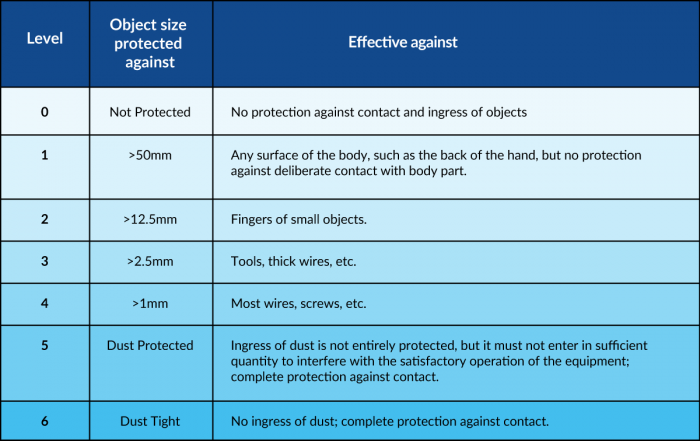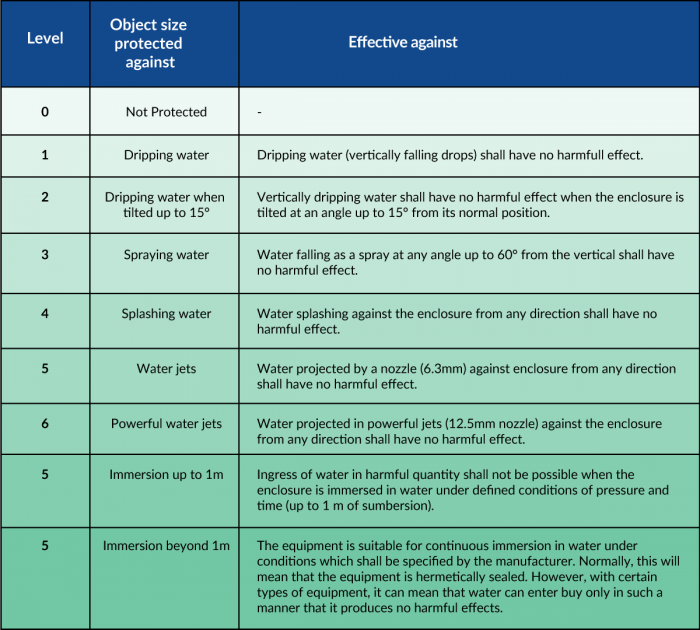Every environment has its equipment hazards. A theater may have a splashy water scene. A live broadcast may be in a windy desert. A ship may be dealing with sea spray from heavy seas. An industrial facility may be operating in harsh conditions. But no matter what the environment hazard is, communication is critical to these teams and they need to know that their communication systems are up for the challenge.
IP Ratings are outlined as part of the international standard IEC 60529 to classify sealing effectiveness of enclosures of electrical equipment against solids and liquids. This classification system utilizes the letter "IP" followed by two, and on some occasions, three digits. Each digit indicates conformity within the given conditions.
Letters IP:
Not to be confused with Internet Protocol, the IP represents International Protection or Ingress Protection.
First Digit - Solids Protection
The first digit indicates the degree of protection that the enclosure provides against access to moving parts and the degree in which the equipment is protected against solid foreign bodies that could potentially intrude the enclosure. Examples include contact with body parts like hands or fingers, tools, wires, dust, and full dust protection.
Second Digit - Liquids Protection
The second digit indicates the degree of protection of the equipment inside the enclosure against various forms of moisture. Examples include dripping water, water spray, water splashes, and full water immersion.

Now that you understand IP Ratings, let's take a quick look at some specialized Clear-Com products and their IP Ratings.
Encore 800 Series for Industrial and Marine
These products were developed for marine vessels and for harsh conditions within Industrial and Maritime operations.
FreeSpeak II O2 for High Pressure Environments
These products were developed for high pressure environments, like Hyperbaric Chambers or deep sea operations.
Source: http://www.dsmt.com/resources/ip-rating-chart/